The document analyzes the construction materials used in a residential building located in Brunei Darussalam. It is divided into three parts. Part 1 provides illustrations of the building through photos and drawings. Part 2 explains and identifies the foundation (pile foundation), slab (reinforced concrete slab), and roof (hipped roof with timber trusses) materials. Part 3 compares these materials to other foundation types (pad foundation and raft foundation), and slab types (mass concrete slab and precast slab). It recommends alternatives and assesses the building materials.
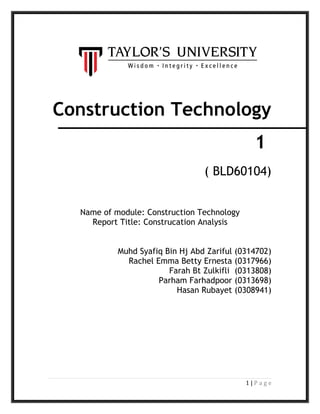

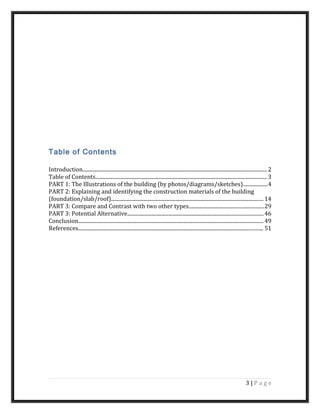

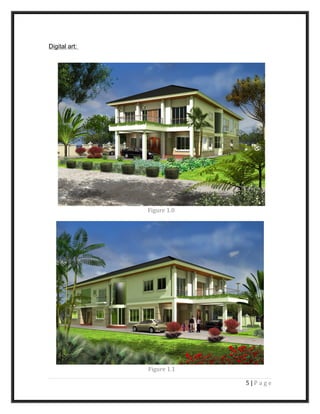










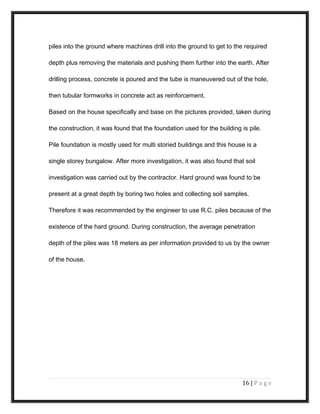



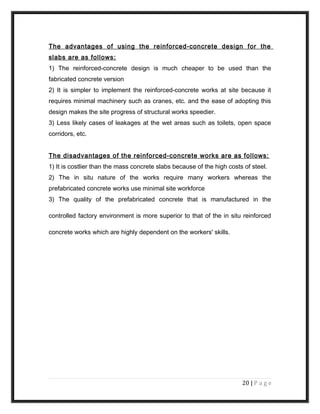



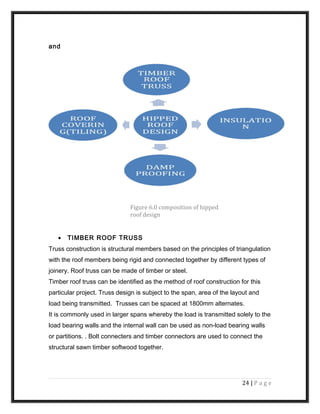


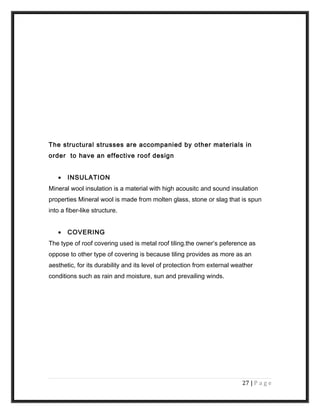






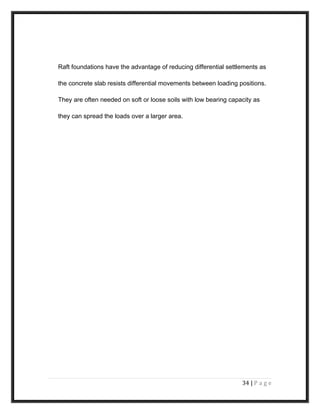




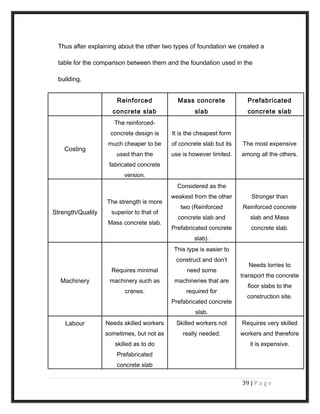
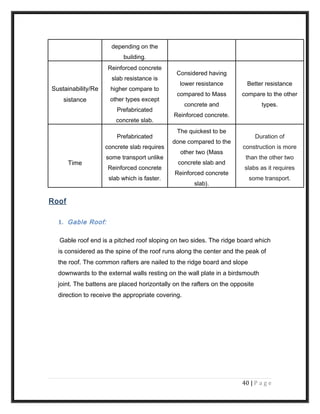



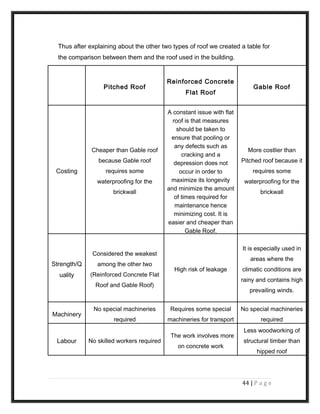



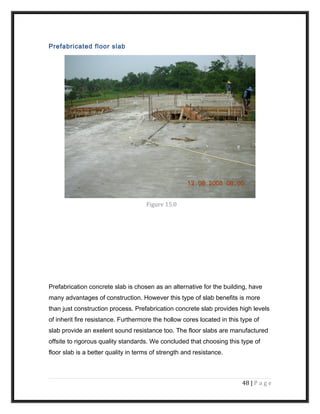
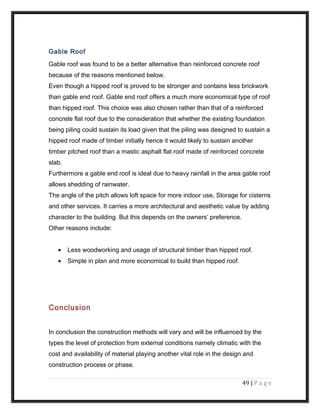

![References
Reference for Foundation
1) FIORICompany. (n.d.). PILING, FOUNDATION
& SOIL STABILIZATION. Retrieved June 8,2014 from http://www.fiorigro
up.com/applications/piling-foundation/
2) Designing Buildings Wiki Ltd. (2014). Pile
Foundation. Retrieved June 8,
2014 from http://www.designingbuildings.co.uk/wiki/Pile_found ations
3) Northumbria University.(n.d. ). Pile Foundations. Retrieved June 9,
2014 from
http://nuweb2.northumbria.ac.uk/bedemo/Domestic_Foundation/page_13
.htm
Reference for Slab
1) Assakkaf, I. (2004), Reinforced Concrete [PowerPoint slides]. Retrieved
June 7, 2014 from
http://www.assakkaf.com/courses/ence454/lectures/chapter4.pdf
51 | P a g e](https://image.slidesharecdn.com/sem1degreectassignment-1-140701042746-phpapp02/85/Sem-1-degree-ct-assignment-1-51-320.jpg)
![2) McCormac, J., C., & Nelson, J., K. (2006), Design of Reinforced
Concrete . Retrieved June 7, 2014 from
http://www.scribd.com/doc/88859325/Design-of-Reinforced-Concrete-
7th-Edition
3) Anderson, L., O., (n.d.), Concrete floor slabs on ground . Retrieved June
7, 2014 from http://www.oldhouseweb.com/how-to-advice/concrete-floor-
slabs-on-ground.shtml
4) Flasch, J., (n.d.), Concrete, Block, and Slab Foundations. Retrieved
June 7, 2014 from http://www.bobvila.com/articles/442-concrete-block-
and-slab-foundations/#.U5e5afmSwtB
Reference for Roof
1) Bibliography: FG Forrest, 1. (2014). Products > Technical Section > Roof
Covering | KB - BLOK systém, s.r.o. Kb-blok.cz. Retrieved 17 June 2014,
from http://www.kb-blok.cz/en/products/technical-section/roof-
covering.shtml
References
1) Howe Girder [Photograph]. (n.d.). Retrieved June 9, 2014, from
52 | P a g e](https://image.slidesharecdn.com/sem1degreectassignment-1-140701042746-phpapp02/85/Sem-1-degree-ct-assignment-1-52-320.jpg)
![http://www.birminghamzoo.com/animals/
2) Builder Bil. (n.d.). Graphical Construction Glossary >> Roofs And
Roofing. >> Roof Types >> Howe Truss. Retrieved June 9, 2014,
from http://www.builderbill-diy-help.com/howe-truss.html.
3) American Pole & Timber. (n.d.). Structural Timber Trusses. Retrieved
June 10, 2014, from http://www.americanpoleandtimber.com/prod-
structural-timber-trusses.shtml.
4) G&G Custom Metal Fab LLC [Photograph]. (2012). Timber Connectors 2.
Retrieved June 10, 2014,
from http://ggcustommetalfab.com/gallery/welcome-to-gg-custom-metal-
fab-llc/imag0326/
5) jack truss. (n.d.). Dictionary.com Unabridged. Retrieved June 15, 2014,
from Dictionary.com website: http://dictionary.reference.com/browse/jack
truss
6) Mineral wool. (n.d.). In Wikipedia. Retrieved June 16, 2014, from
http://en.wikipedia.org/wiki/Mineral_wool.
7) The Concrete Society. (n.d.). Suspended floors. Retrieved June
17, 2014, from http://www.concrete.org.uk/fingertips_nuggets.asp?
cmd=display&id=245
8) Murphy,S. (n.d.). The Best Flat Roofing Materials. Retrieved June
53 | P a g e](https://image.slidesharecdn.com/sem1degreectassignment-1-140701042746-phpapp02/85/Sem-1-degree-ct-assignment-1-53-320.jpg)
